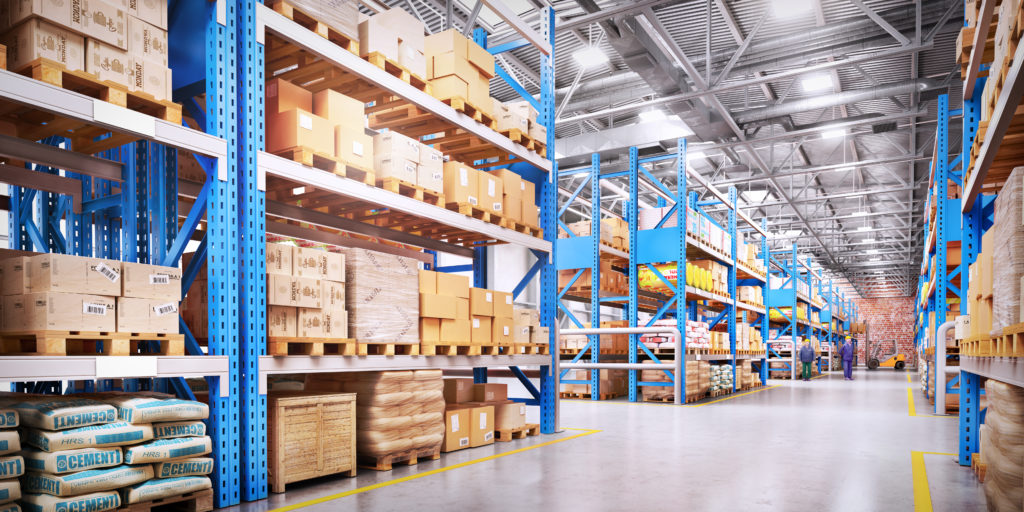Companies spend significant sums of money on operating warehouses— from purchasing the land, building, labour costs, and the items stored in the warehouse. The primary challenge in warehouse operations is the limited space. Technically, a warehouse runs out of room when it’s between 80% and 85% occupancy. At this point, efficiency in terms of movement and storage reduces.
A warehouse could run out of space for various reasons, including a slow period of sales, large discount buying, seasonal peaks, and store consolidation, among others. Generally, the space is limited because of having excess inventory, excess merchandise that’s not required, and poor usage of the available storage.
Warehouse space utilization is key to the success of a business in that it helps to improve efficiency and decrease costs. Read through this article to learn the ways of maximizing space in the warehouse.
- Find Out How Much Space There Is And How It’s Used
Maximizing warehouse space begins with determining the space used up and its purpose. It all depends on your type of warehouse, the system of your storage, and the characteristics of your inventory.
Calculate space utilization using the warehouse management system (WMS) by dividing the total volume of all the products by the storage area size and multiplying by 100. Analyse your findings after determining your space utilization. A lesser percentage may mean that your storage method could be limiting the maximum use of the space available. Use that analysis to make the necessary adjustments and improvements.
- Make Use Of The Vertical Space Available
Are you using all the vertical space you have in the warehouse? Calculate how much of it is left unused. Explore storage options like cantilever racking, pallet racking, and vertical moulding racks to start maximizing your vertical space. Providers like Stackit Shelving offer these options and can also give their professional opinion for your warehouse space.
- Ensure That Warehouse Space Is Consistent With The Items To Be Stored
Keep measurements of your shelving and available space. Do the size of the items match the space they occupy? If, for instance, a finished product is packed in a 3×3 feet container, then stored in a rack made to fit a 5×5 feet box, there will be unused spaces. This is not a wise use of your valuable warehouse space. Match your inventory and space well to get the most out of your warehouse.
- Reduce The Width Of The Isles In The Racking Area
A 10-12 foot isle is wide. You could save about 15% to 20% space if you reduce the isle to about 5 feet to 8 feet. Note that this option comes with some expense to it because of the adjustments that have to be made, like wire guiding in a narrow isle situation.

- Clean Up The Floor To Get More Space
Floor space is the most accessible location in the warehouse, and it should be reserved for active inventory. Do regular checks to ensure that the floor space is only used for fast-moving, active items. Evaluate the condition of unused equipment and see if it can be resold to companies like brilliantelec.com. If the equipment has been stored to be used later, consider moving it to another location. Do away with items that have way surpassed their time to be collected, and make sure the floors are regularly swept and cleaned.
- Fix A Mezzanine
If you have ample space, why not install a mezzanine? Check to see if the layout of your warehouse allows for one. Here are two possible uses of a warehouse mezzanine:
- Extra working space: You can use the mezzanine as office space for your employees. It provides a great vantage point to see all the work on the floor and help prevent any untoward accidents involving heavy machinery or inventory.
- Increased storage space: If you have new inventory coming in but nowhere to put it, use the mezzanine. There’s no need to build or rent out another warehouse because this extra space is already durable and accessible.
Though there are possible building and construction costs when adding a mezzanine, it is still a cost-effective solution for your goal of adding space to your existing warehouse.
Conclusion
Maximizing warehouse space is doable as long as you can determine the area available and the items stored. It eliminates the assumption that you may need a more extensive warehouse and could create more than enough space. Employ effective warehouse management strategies to make sure you are getting the most of out every inch of your building.






